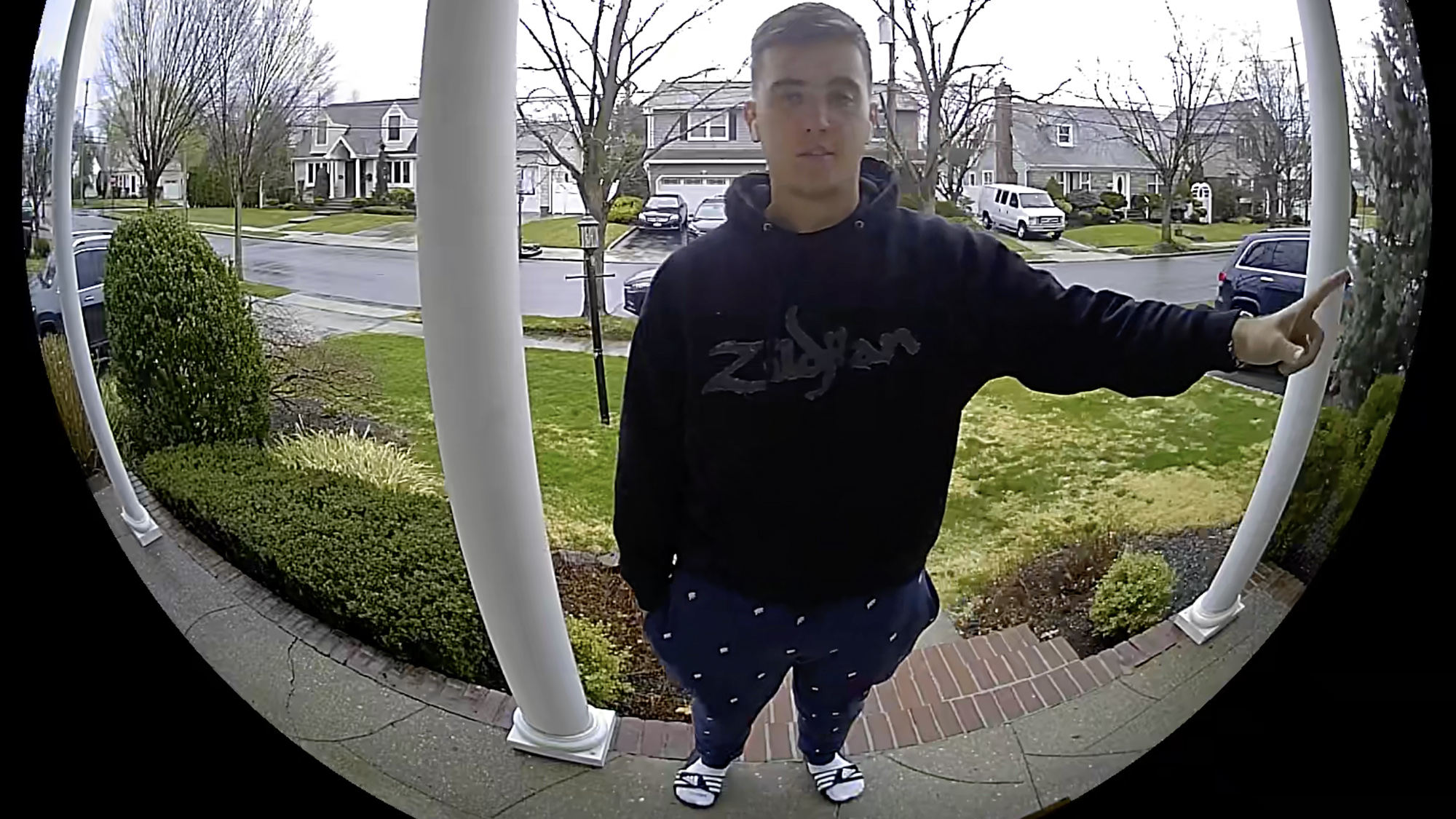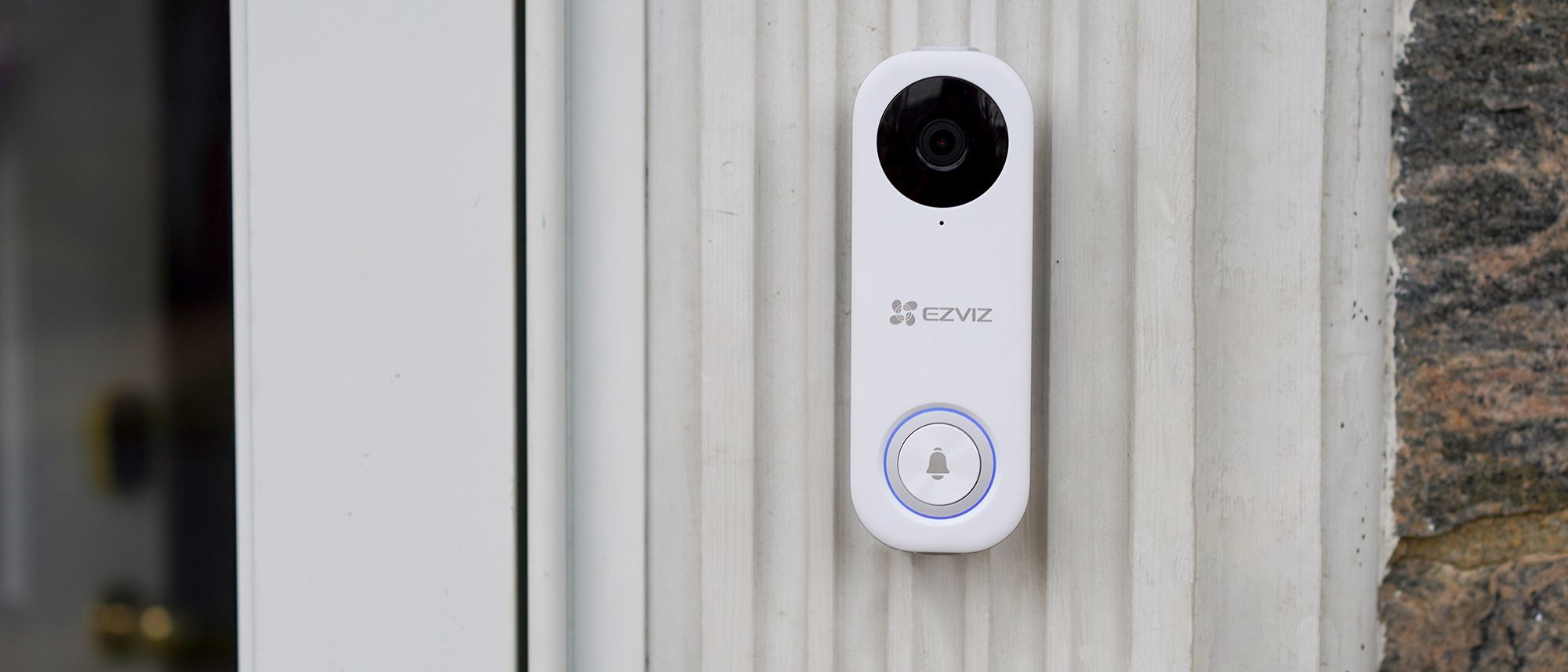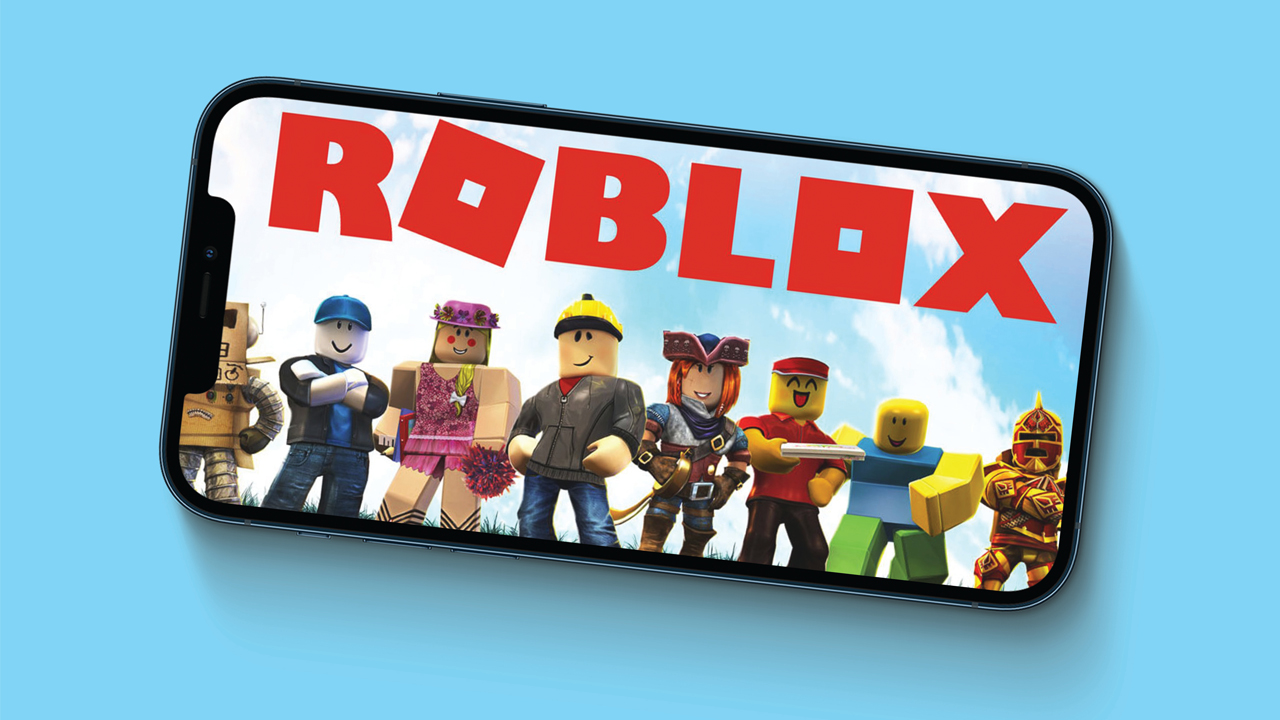Tom's Guide Verdict
This is a small capable video doorbell that worked very well at capturing motion, but it lacks two-factor authentication and its smart features need to be more reliable
Pros
- +
Relatively inexpensive
- +
Versatile
- +
Very good quality video and decent audio
- +
Includes smart home technology
Cons
- -
Hardwired only
- -
Does not include two-factor authentication for sign-in
- -
AI human detection feature wasn’t reliable
Why you can trust Tom's Guide
Size: 5.05 x 1.82 x 0.76 inches
Video resolution: 1536 x 1536 at 15 fps (with H.265 / H.264 compression)
Field of view: 170 degrees (vertical)
Weather resistance: IP65 (designed for indoor and outdoor use)
Wireless: 802.11 a/b/g/n (2.4GHz and 5 GHz dual bands)
Power requirements: Requires hardwire connection—AC 12V to 24V
Operating temperature: 22 to 142 degrees F
The EZVIZ DB1C Video Doorbell has an attractive price, and also offers several cloud storage plans that are reasonable.
Plus, it has very good quality video, and offers useful features and services to compete in an increasingly competitive video doorbell market.
However, it’s not as versatile as other doorbells that offer battery support. We also found its AI human detection wasn’t as reliable as I’d like it to be.
And unlike the best video doorbells, it does not offer two-factor authentication for sign-in.
EZVIZ DB1C Video Doorbell: Price and availability
The EZVIZ DB1C has a sticker price of $99.99, but we have seen it listed recently as low as $69.99 at B&H. The latter price is inexpensive for a video doorbell.
However, like most video doorbells, you’ll need to purchase a cloud plan. To start, you get up to 30 days free of EZVIZ’s 7-day event-based video history. That will provide you, at first, with unlimited cloud storage. But you’ll need to then buy one of EZVIZ’s two types of paid plans for its CloudPlay subscription — either its Standard Plan or Home Plan:
The Standard Plan has two options:
Get instant access to breaking news, the hottest reviews, great deals and helpful tips.
- 7-Day Playback (stores 7 days of video per camera for you to access) for $5.99 per month or $59.99 per year.
- 30-Day Playback (stores 30 days of video per camera for you to access) for $10.99 per month or $109.99/year.
Since many people have multiple security cameras, they offer an additional place. So its Home Plan (or Premium Plan) has two options as well:
- 7-Day Playback (stores 7 days of video from up to 4 cameras for you to access) for $8.99 per month or $89.99 per year
- 30-Day Playback (stores 30 days of video from up to 4 cameras for you to access) for $15.99 per month or $159.99/year
When compared to the best cloud storage plans for security cameras, EZVIZ’s subscription costs don’t offer as much value as those from Ring and Nest, both of which provide at a minimum 30 days of cloud storage. Ring’s plans start at $3/month; Nest’s basic plan is also $6/month, but includes unlimited cameras at a single location.

You can also store your videos on a micro SD card, which is relatively easy to install. However, the app did notify more than once that the card wasn’t working.
EZVIZ DB1C Video Doorbell: Installation and power options
The EZVIZ DB1C has a small instruction pamphlet that’s handy in letting you quickly install the doorbell, depending on the configuration you have. For example, there’s one configuration for you to wire the doorbell if you have a house with a mechanical or electronic doorbell chime, in which case there’s an included power kit that will also power that chime. If you don’t have a chime in your house, there’s an additional configuration for that installation. I don’t think the chime on the unit itself is all that pleasant sounding, but it does the job in notifying you that someone’s at the door.
The DB1C box includes everything you need to get up and running. It even has two different mounting plates, one of which is angled. It even has the right size drill bit to drill the holes for screwing in the doorbell hardware.
Unfortunately, it doesn’t offer the ability to charge an on-board lithium-ion battery, which is helpful if you don’t have a hard-wired house with wires available to hook up the video doorbell. However, because it doesn’t include an internal rechargeable battery, it’s smaller and thinner than other video doorbells that include a battery, such as the Ring Video Doorbell 3. The instructions also ask you to download the EZVIZ app, which is compatible with Apple iOS iPhones and devices and Android phones and devices.
EZVIZ DB1C Video Doorbell : Design and interface
I liked the simple, understated appearance of the DB1C video doorbell itself: It’s small, thin and nicely designed. Most of all, it blends in nicely on the frame of my front door. Like other video doorbells, it has a rugged exterior that has a IP65 rating, which means it's waterproof.
The company did a nice job on developing a logical and useful app, which is relatively intuitive in terms of accessing video clips. On the home screen, you can click on an icon of the DB1C, which will have the latest screenshot of what it’s recently recorded. It will also indicate whether the video is armed or offline — and at the bottom of the screen, you can click a shield icon to disarm your video doorbell and turn it off.
On the following screen, you can view the video clip or photo that had been taken from a particular event (if you’ve already subscribed to CloudPlay, the latest thumbnails will appear below the main video stream screen). Below the timeline, you can click on several buttons that let you record a video, take a snapshot or perform other tasks, like changing the definition of video clips (SD, HD and ultra HD) or changing the aspect ratio from 1:1 (which gives you a fisheye point of view) to a more horizontal, landscape format (although this has slightly less resolution, since its cropped).

Again, from the home screen, you have access to other parts of the apps and doorbell’s functionality. For instance, in the upper left-hand corner of the apps, you can quickly go to your profile and edit it there. You can also go into your album, which gives you access to all the video clips and photos the doorbell has produced, all nicely organized under the date. There are also other sections, including general settings (where you can also add your email and check Wi-Fi configurations) and CloudPlay section (to purchase storage), as well as an about and help sections.

You’ll also find an IFTTT section, to allow you to use various smart-home technologies. And there’s also a family and guests section, which allows you to share videos and photos with others (provided they also have an EZVIZ account). Once you buy EZVIZ’s cloud service, there is a web-based interface you can use, but it would be nice to have broader web browser support: The only supported browsers are Internet Explorer v11 for Windows and Safari for Mac. But Chrome isn’t supported (unless you use an extension).
EZVIZ DB1C Video Doorbell: Video/audio quality and notifications
The view you get with the lens in the EZVIZ gives you a fish-eye lens type of distortion (or barrel-lens distortion). However, aside from this distortion, I thought the footage, which is captured at 1536 x 1536 at 15 fps, had very good detail, decent color saturation and good color fidelity. Most of all, you could discern fine details, like a logo on a sweatshirt or package. And, because it has a 170-degree field of view — wider than even the Ring Video Doorbell Pro 2 — you can see much more of your front porch. In bright light, the video clips worked very well.

In low light, the EZVIZ DB1C uses infrared technology (IR) that will illuminate a subject. However, the figure will generally appear ghostly white in appearance, which is common with IR. For instance, when I held up a color chart that I used in testing, most of the color swatches looked entirely monochrome and lacked color saturation. My dark blue Mets hat was completely white, too.
Audio was also good: In my tests, both parties could clearly hear and talk with each other.
In the alarm notification section of the app, you have a number of parameters you’ll want to take time to set to fit your needs, specifically, the motion detection areas and sensitivity of those areas. You can also set the human shape detection or image change detection. (However, I didn’t find this worked reliably in being able to tell people from cars, etc.) You can also add a notification schedule: For instance, you may not want to be notified on the weekends.
EZVIZ DB1C Video Doorbell: Security, privacy and smart home compatibility
The EZViz DB1C doesn’t include two-factor authentication for signing-in, which most other video doorbell makers are now including to make the process more secure. Additionally, the DB1C can work with several smart-home services, including Amazon Alexa, Google Assistant and IFTTT, which would allow this video doorbell to be integrated within one of those smart-home ecosystems.
According to the company, the doorbell has AI-based technology to distinguish between human and non-human subjects. The good news is that the DB1C was quite sensitive in detecting any movement. But after using the unit for a while, I didn’t find it reliably distinguished human movement from non-human movement. (Note: I promise you I did not try any 1980s robot-style dancing to fool the video doorbell.) The doorbell will also let you know when the unit is offline by sending you an email.
EZVIZ DB1C Video Doorbell: Verdict
Overall, the EZVIZ DB1C video doorbell has some very enticing qualities—it’s nicely designed, includes a well-designed app, and produces very good video, photo and audio. I found it easy to use. I also set it up pretty quickly. It also has some promising qualities for the smart home and is pretty inexpensive.
However, it doesn’t allow for battery support and lacks two-factor authentication for sign-in, the latter of which could be a big drawback for some consumers. I also believe its AI human detection feature could be more reliable. Among the best video doorbells in this price range, we prefer the 2nd generation Ring Video Doorbell and the Arlo Essential Video Doorbell, which offer more features and two-factor authentication.
Terry Sullivan is an experienced technology journalist who has covered consumer electronics including cameras, smartphones, audio tech and software among many other things. His work has appeared in the likes of Consumer Reports, PCMag, Lifehacker, and the New York Times and he is also a teacher, photographer, artist, and musician.

